Disclosure: This article contains affiliate links. We may earn a commission from purchases at no extra cost to you, which helps our travel content.
The moment our 4x4 cleared the outskirts of Windhoek, my soul instantly recalibrated to adventure mode. The sprawling Namibian landscape unfolded before us—a canvas of golden savanna stretching toward the horizon, punctuated by rugged mountains that seemed to guard ancient secrets. After years of motorcycle journeys across Brazil's coastal highways and Colombia's mountain passes, trading two wheels for four to explore Namibia with friends was a welcome change of pace. This 400km journey from Windhoek to Etosha National Park isn't just a drive; it's a transformative experience that connects you with one of Africa's most pristine wilderness areas. Having just returned from this incredible week-long adventure, I'm eager to share the route details, hidden stops, and practical wisdom that will help you navigate this unforgettable Namibian odyssey with confidence—whether you're a solo traveler like me this time around or planning a future family expedition.
Planning Your Windhoek to Etosha Route
When mapping your journey from Namibia's capital to the wildlife sanctuary of Etosha, you've essentially got two route options: the quicker B1 highway or the more scenic route through Okahandja and Otjiwarongo. Having tried both during different visits, I'll always advocate for the scenic route—it adds barely an hour to your drive time but delivers exponentially more in terms of authentic experiences.
The B1 route covers about 420km on well-maintained tarmac roads and takes roughly 4.5 hours of straight driving. However, the scenic alternative via the C38 rewards you with charming towns, craft markets, and those stop-in-your-tracks vistas that make Namibia so special.
Before setting out, I spent an evening at my hotel in Windhoek plotting waypoints on my GPS navigation, which proved invaluable when cell service became spotty outside urban areas. While Google Maps works near towns, having offline navigation capability is essential for the remote stretches.
One crucial planning tip: calculate your fuel needs carefully. The distance between gas stations increases dramatically once you're north of Otjiwarongo. I learned this lesson years ago while motorcycle touring in similar terrain—always fill up when you have the chance, even if you're only down a quarter tank.
For accommodations, I recommend breaking this journey into at least two days to fully appreciate the transition from urban Windhoek to the wilderness of Etosha. Otjiwarongo makes for an excellent midway stopover with several quality lodges and guesthouses that won't break the bank.
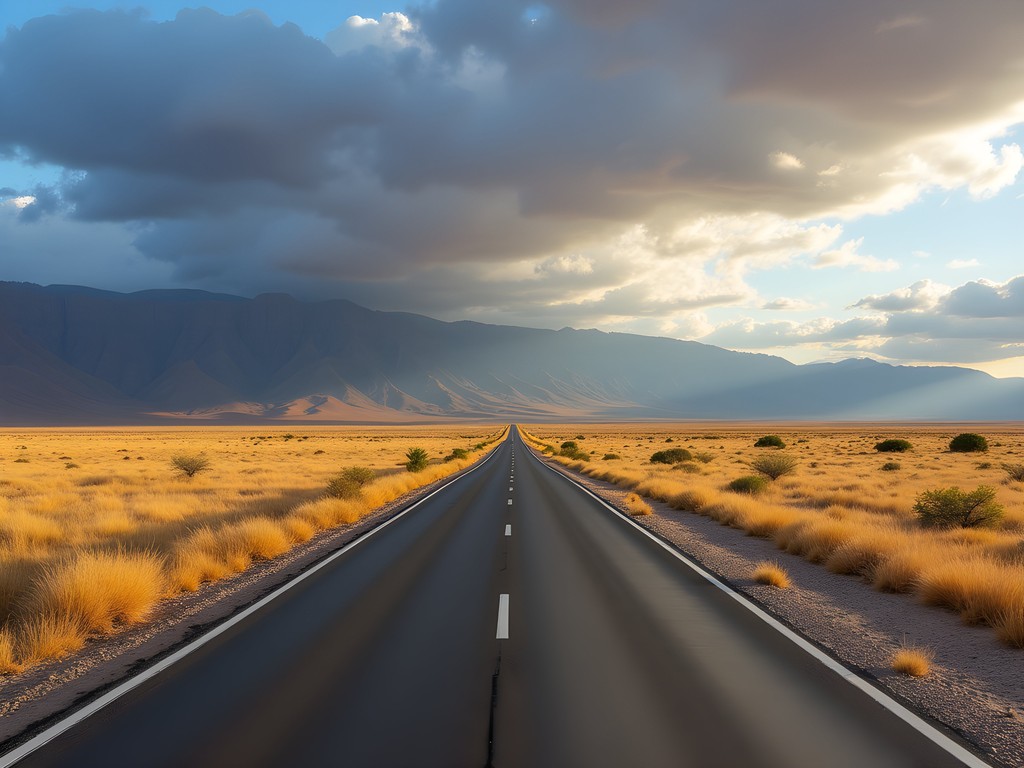
💡 Pro Tips
- Fill your gas tank at every opportunity, especially in Otjiwarongo before heading north
- Download offline maps before departure as cell service is unreliable between towns
- The C38 route is slightly longer but offers better scenery and cultural stops than the B1
Vehicle Selection & Preparation
Let me be clear about one thing: while I love my motorcycle adventures, Namibia's vast distances and wildlife considerations make a sturdy 4x4 vehicle the optimal choice for this journey. After considerable research and previous experiences in similar terrain, I opted for a Toyota Fortuner with raised suspension—a decision that paid dividends when we encountered unexpected washouts near Outjo after a rare winter shower.
Renting in Windhoek gives you plenty of options, but book well in advance, especially during the peak June-October safari season. I've found Avis and Europcar offer reliable 4x4s, but local operators like Namibia Car Rental often provide more personalized service and comparable rates. Expect to pay around NAD 800-1200 (USD 50-75) per day for a mid-range 4x4, which is well worth the investment.
Before accepting your vehicle, conduct a thorough inspection. Check tire tread depth (including the spare), test the air conditioning (essential in Namibia's heat), and verify that essential safety equipment is present. My rental came with the basics, but I also packed a emergency roadside kit that includes jumper cables, a flashlight, and basic tools—something I've learned to carry from my motorcycle touring days.
The B1 highway is paved and well-maintained, but secondary roads leading to lodges or viewpoints may be gravel or dirt. Adjust your tire pressure accordingly—slightly lower for gravel roads improves traction and comfort. Most importantly, adjust your driving speed and style for these conditions. The golden rule in Namibia: it's better to arrive an hour late than never arrive at all.
One last vehicle tip that saved me multiple times: pack a portable tire inflator that connects to your car's 12V outlet. This allows you to adjust tire pressure as road conditions change and can be a lifesaver if you get a slow leak in remote areas.
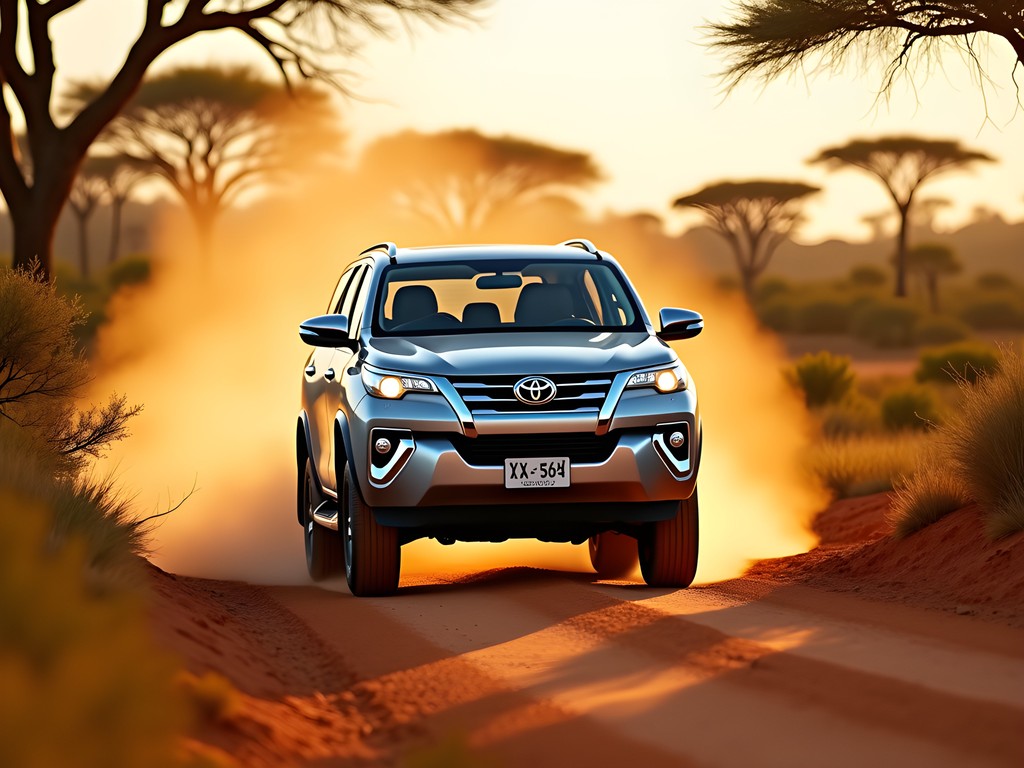
💡 Pro Tips
- Reserve your 4x4 at least 3 months in advance during peak season (June-October)
- Photograph any existing damage to the rental vehicle before departing
- Drive slower than you think necessary on gravel roads—they can be deceptively slippery
Must-Stop Points Along the Way
The journey from Windhoek to Etosha isn't just about reaching your destination—it's about embracing the experiences along the way. Having made this trip multiple times, I've curated my favorite stops that transform a simple drive into an immersive Namibian adventure.
Okahandja Wood Carvers Market (70km from Windhoek) Just an hour north of Windhoek, this sprawling open-air market showcases incredible craftsmanship. I spent nearly two hours here, watching artisans transform native hardwoods into intricate animal figurines and practical items. The vendors are passionate about their craft and happy to explain their techniques. Negotiation is expected, but remember that fair prices support local artisans. I picked up a hand-carved giraffe that now has pride of place in my Rio apartment.
Otjiwarongo Crocodile Ranch (250km from Windhoek) This unexpected gem offers a fascinating glimpse into conservation efforts for Nile crocodiles. The guided tour explains the life cycle and ecological importance of these prehistoric creatures. It's educational without being overly touristy, and the ranch's restaurant serves surprisingly excellent food—their game meat platter is worth the stop alone.
Outjo Bakery (330km from Windhoek) This unassuming spot is legendary among locals and travelers alike. Their apple strudel reflects the German colonial influence in Namibia and makes for the perfect road trip snack. I always grab extra pastries for the final leg to Etosha. The bakery also makes excellent sandwiches if you're planning a picnic lunch.
C38 Viewpoint (360km from Windhoek) About 30km before reaching Etosha's Anderson Gate, pull over at the unmarked viewpoint on your right. The elevated position offers your first glimpse of the vast Etosha landscape stretching to the horizon. I caught this at sunset on our journey, and the way the golden light played across the savanna was breathtaking—a perfect preview of the wilderness awaiting us.
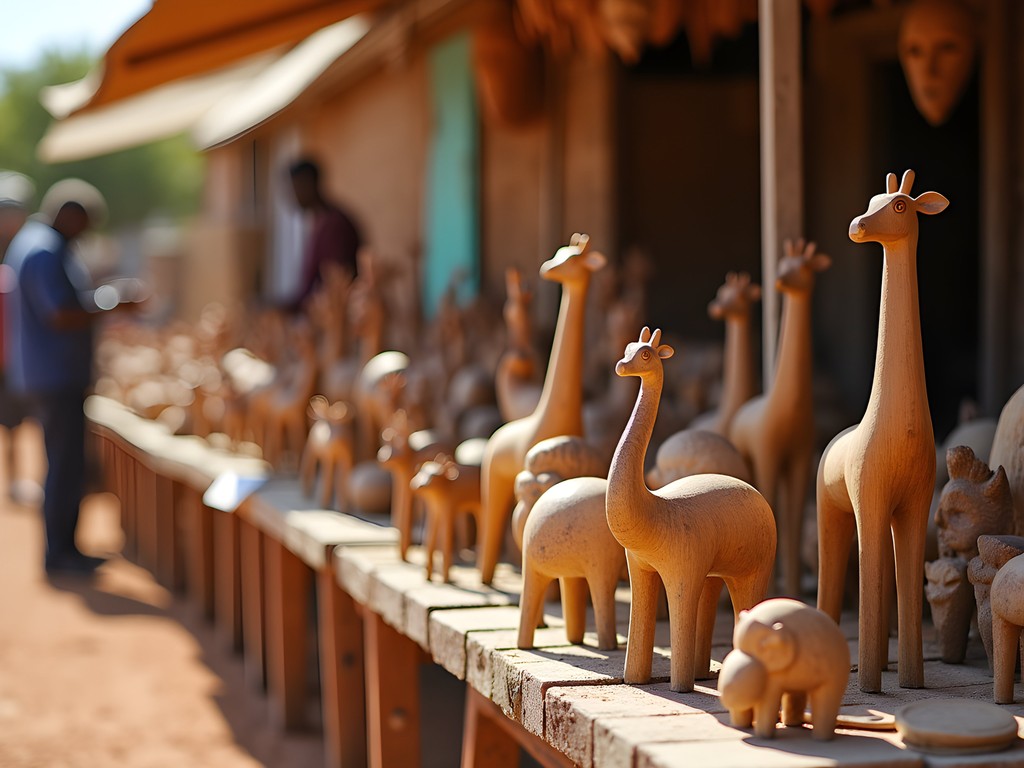
💡 Pro Tips
- Arrive at Okahandja Market before noon to avoid the midday heat while shopping
- Bring cash for craft markets as card facilities are limited outside major towns
- Plan your journey to hit the C38 Viewpoint around sunset for spectacular photography opportunities
Wildlife Safety & Viewing Tips
As you approach Etosha National Park, the landscape gradually transforms, and wildlife sightings become increasingly likely. This transition zone demands heightened awareness and respect for the animals whose territory you're entering.
My first wildlife encounter on this route happened about 50km outside Etosha's Anderson Gate—a small herd of springbok gracefully crossed the road, followed by a family of warthogs trotting along with their tails held high like antennas. These initial sightings always trigger that childlike excitement in me, regardless of how many safaris I've experienced.
Road Safety Near the Park As you get closer to Etosha, reduce your speed to 60km/h maximum. This isn't just for safety—it dramatically increases your chances of spotting wildlife. Animals are most active during early morning and late afternoon, which unfortunately coincides with challenging driving conditions. My polarized sunglasses proved invaluable during sunset drives when glare can make spotting animals nearly impossible.
Always maintain a safe distance from wildlife—I recommend staying in your vehicle when animals are present. During my last visit, we watched a tourist unwisely exit their car to photograph zebras, only to scramble back inside when a bull elephant emerged from nearby brush. The elephant was simply curious, but the situation could have escalated quickly.
Preparing for Etosha Before entering the park, take time to study the park map and waterhole locations. During dry season (May-October), animals congregate around these precious water sources, making them prime viewing locations. I always keep my binoculars within easy reach—they've helped me spot distant lions and leopards that would have otherwise gone unnoticed.
One insider tip from my restaurant management background: pack a cooler with water and snacks. While there are rest camps within Etosha, having your own supplies means you can extend your game drives without worrying about returning for meals or refreshments. Just remember that all food waste must leave the park with you—Namibia takes its conservation responsibilities seriously.
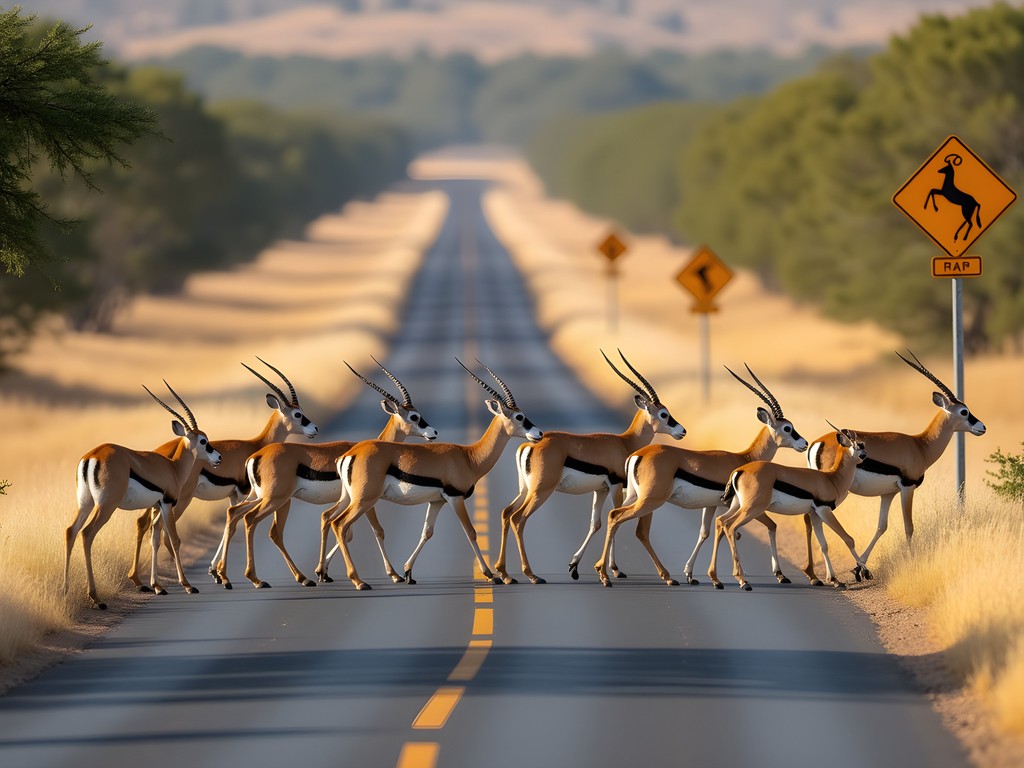
💡 Pro Tips
- Drive at 60km/h or slower within 50km of park boundaries to avoid wildlife collisions
- The first and last hours of daylight offer the best wildlife viewing opportunities
- Keep windows up and doors locked when large predators are present
Accommodation Options: From Budget to Luxury
Finding the right place to rest between driving stretches can make or break your Windhoek to Etosha experience. After years in restaurant management and hospitality, I've developed a keen eye for quality accommodations that deliver value regardless of price point. Here's my curated selection from this route, based on personal stays and thorough research.
In Windhoek (Starting Point) Before hitting the road, I spent two nights at The Olive Exclusive All-Suite Hotel—a boutique property that blends contemporary luxury with distinctly Namibian design elements. At around NAD 2,500 (USD 150) per night, it's not cheap, but the personalized service and stunning suites make it worth the splurge for your first or last nights in Namibia.
For mid-range options, Windhoek Gardens Guesthouse offers excellent value at approximately NAD 1,200 (USD 70) per night, with comfortable rooms and a refreshing pool—perfect for acclimatizing to Namibia's heat.
Otjiwarongo (Halfway Point) Breaking the journey in Otjiwarongo makes perfect sense, and C'est Si Bon Hotel has become my go-to stopover. Their family rooms are spacious, the restaurant serves surprisingly good steaks, and at NAD 1,000 (USD 60) per night, it won't strain your budget. The staff can also arrange last-minute supplies before you continue north.
Near Etosha (Anderson Gate) Mushara Lodge, located just 8km from Etosha's eastern gate, offers an ideal blend of comfort and wilderness immersion. Their thatched chalets start at NAD 1,800 (USD 110) per person including dinner and breakfast. What makes Mushara special is their waterhole—we watched a family of kudu visit during dinner, creating that magical connection with wildlife that defines a Namibian safari.
For budget travelers, Etosha Safari Camp provides cheerful accommodations at around NAD 1,200 (USD 70) per person. Their lively central area features live music most evenings, creating a communal atmosphere that solo travelers like myself particularly appreciate.
One accommodation tip I've learned from years of travel: book lodges near park gates for at least two nights. This allows you to enter Etosha at sunrise when wildlife viewing is optimal, without rushing your morning departure.
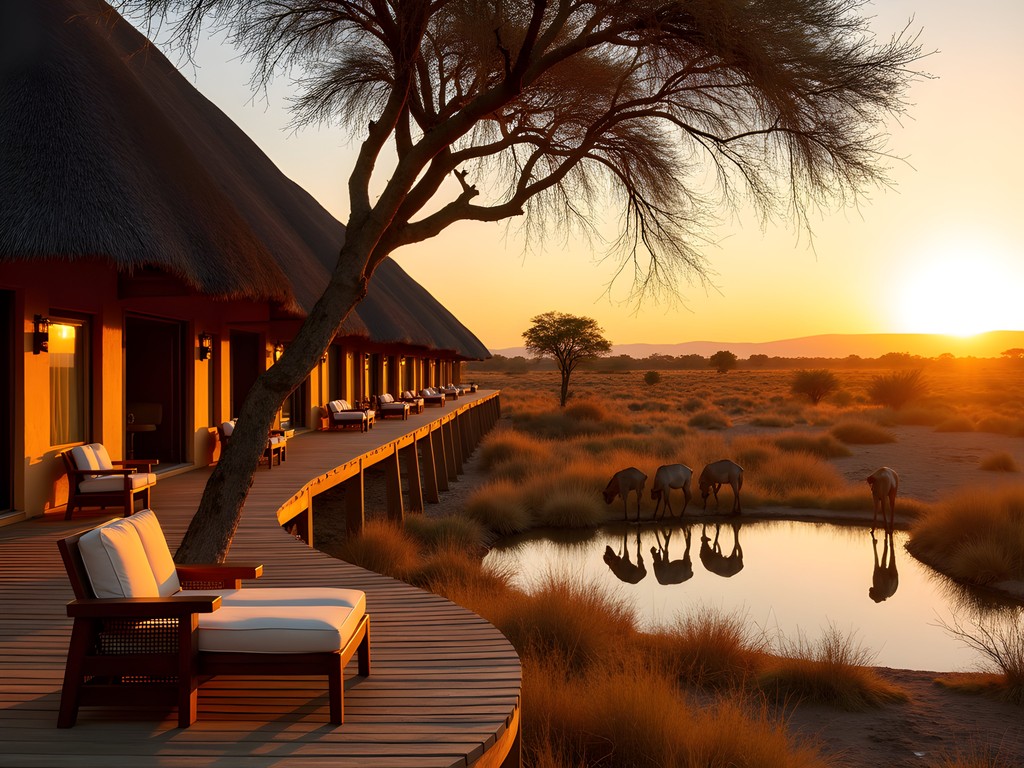
💡 Pro Tips
- Book accommodations at least 4-6 months in advance for high season (June-October)
- Request rooms away from common areas for better wildlife viewing opportunities at lodge waterholes
- Many lodges offer packed breakfast options if you want to enter Etosha at sunrise—request these the night before
Navigating Etosha: First-Timer's Guide
Arriving at Etosha's gates feels like crossing a threshold into another world—one where humans are merely visitors in an ancient animal kingdom. Having explored national parks across four continents, I can confidently say Etosha offers one of the most accessible yet authentic safari experiences available.
The park spans an enormous 22,270 square kilometers, centered around the Etosha Pan—a vast salt flat visible from space. During my winter visit (June-August), the dry conditions concentrated wildlife around waterholes, creating spectacular viewing opportunities without requiring advanced tracking skills.
Park Entry Logistics Etosha has four main gates, but coming from Windhoek, you'll likely use Anderson Gate in the south. Arrive with your passport, vehicle registration, and cash for entry fees (approximately NAD 150/USD 10 per person per day plus a vehicle fee). The entry process is straightforward but can be slow during peak season—another reason to stay nearby and enter early.
Upon entry, you'll receive a map marking all roads and waterholes. While this map is helpful, I also recommend downloading the AfriGIS Etosha Guide which works offline and includes updated waterhole activity reports from other visitors.
Self-Drive Safari Strategy Etosha is primarily a self-drive destination with well-marked gravel roads. The key to successful wildlife viewing is patience and planning. Rather than constantly driving, identify 3-4 waterholes to visit and spend at least an hour at each. During my visit, we watched an entire lion pride arrive, drink, and interact at Okaukuejo waterhole—a two-hour wildlife drama that would have been missed had we been rushing between locations.
Mornings and late afternoons offer optimal lighting and animal activity. During midday heat (11am-3pm), either return to your lodge or visit one of the rest camps inside the park. Okaukuejo, Halali, and Namutoni camps all have restaurants, shops, and shaded areas where you can escape the sun while planning your afternoon game drive.
Wildlife Viewing Etiquette Keep noise to a minimum, turn off your engine when stopped, and never feed animals. Position your vehicle with the sun behind you for better visibility and photography. Most importantly, remember that you're a guest in these animals' home—their natural behavior is the true privilege of visiting Etosha.

💡 Pro Tips
- Enter the park as soon as gates open (sunrise) for the best predator sightings
- Bring a thermos of coffee and breakfast to enjoy during your morning game drive
- Okaukuejo waterhole is illuminated at night, offering rare nocturnal wildlife viewing opportunities
Final Thoughts
As I write this from my apartment in Rio, looking at the hand-carved giraffe from Okahandja Market, I'm transported back to those expansive Namibian horizons where the road seems to stretch into infinity. The journey from Windhoek to Etosha isn't just a transfer between points on a map—it's an immersion into a landscape that recalibrates your sense of scale and connection to the natural world. Whether you're traveling solo as I did this time, with friends, or planning a future family adventure, this route offers a perfect balance of accessibility and authentic wilderness experience. Take your time, embrace the unexpected stops, and remember that in Namibia, the journey truly is as remarkable as the destination. I'd love to hear about your own Namibian road trip experiences in the comments below—or let me know if you have questions as you plan your own adventure from Windhoek to the wildlife paradise of Etosha National Park!
✨ Key Takeaways
- Allow at least 2 days for the journey to appreciate the landscapes and cultural stops
- A 4x4 vehicle is essential for comfort and safety, especially on gravel roads
- Book accommodations well in advance, particularly during the peak June-October season
- Enter Etosha at sunrise for optimal wildlife viewing opportunities
📋 Practical Information
Best Time to Visit
May to October (dry winter season)
Budget Estimate
$100-150 per person per day (excluding vehicle rental)
Recommended Duration
5-7 days (including Etosha exploration)
Difficulty Level
Intermediate
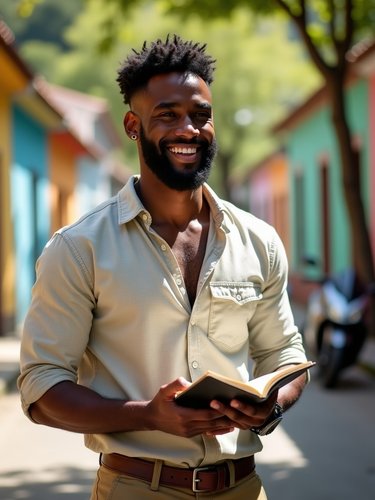
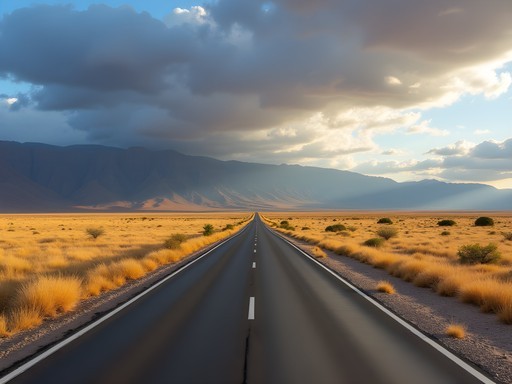

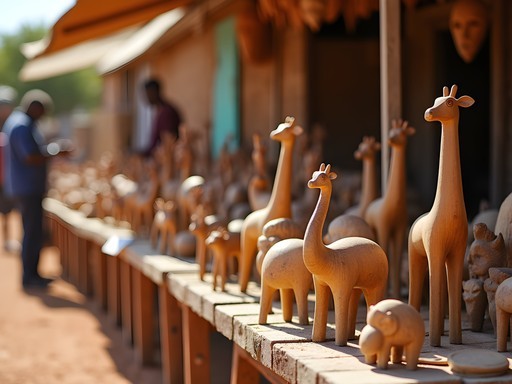
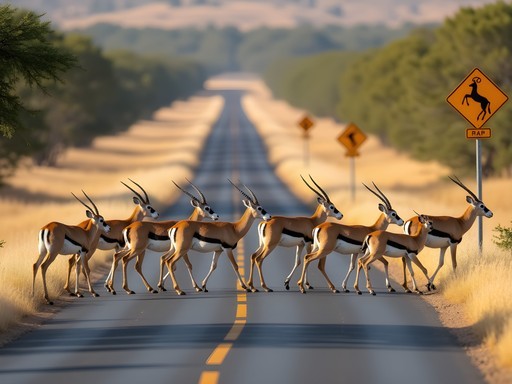












Comments
backpackvibes
Heading to Namibia next month and this guide is perfect timing! Quick question - how's the cell service along this route? Need to stay connected for work emergencies. Also wondering if the accommodations inside Etosha need to be booked super far in advance? Thanks!
citydiver
Not Kevin but I can tell you cell service is surprisingly good along the main road. Inside Etosha it gets patchy. And YES book Etosha camps way ahead - they fill up months in advance, especially Okaukuejo with its waterhole!
Jean Wells
Kevin, excellent breakdown of the route options. Having done this journey three times over the past decade, I've noticed significant improvements in the B1 highway condition. However, I'd add a cautionary note about the section just north of Okahandja where road construction was ongoing as of my visit two months ago. Regarding vehicle selection, I'd emphasize that while a 4x4 isn't strictly necessary for the main route, it's invaluable once inside Etosha, especially for the eastern sections near Namutoni. My research indicates approximately 40% of wildlife sightings occur on the less accessible roads. Your waterhole recommendations are spot-on - Fischer's Pan in particular offered me exceptional elephant viewing with virtually no other vehicles present.
globelover5555
Is Fischer's Pan accessible with a normal sedan? Planning my trip now!
Jean Wells
You can reach the main viewing area with a sedan, but you'll miss some of the more remote sections. I'd recommend at minimum a high-clearance vehicle with good tires. The field guide has excellent maps showing which roads are sedan-friendly.
citydiver
Just did this exact route last month! That stretch between Okahandja and Otjiwarongo was surreal with the landscape changes. We stopped at the Okahandja craft market too - I'm guessing that's where you got your giraffe from? Ended up buying way too many souvenirs there lol. Did you guys see any rhinos at Etosha? We spent 3 days there and spotted everything except rhinos which was a bit disappointing.
Kevin Lawrence
Yes! The craft market is where I got the giraffe. And rhinos are definitely elusive - we got lucky on our last morning at Okaukuejo waterhole, around 6am. Worth getting up early for!
citydiver
Ah, we missed the early morning waterhole visit. Rookie mistake! Definitely noting that for next time.
beachace
How many days would you recommend for the whole trip? Is it doable in a week?
Kevin Lawrence
A week is tight but doable! I'd recommend at least 2-3 days in Etosha alone. If you can stretch to 10 days, you'll have a much more relaxed experience.
Bryce Diaz
Kevin, your post captures the essence of this journey perfectly! I did this solo trip in January and can confirm everything you've mentioned. The transition from Windhoek's urban landscape to the vast wilderness is mind-blowing. For those planning this drive, I'd add that the B1 highway is excellent, but once you turn off toward Etosha, be prepared for occasional gravel sections. Also, Anderson Gate has shorter lines than Von Lindequist Gate in my experience. I stayed at Okaukuejo Camp for the floodlit waterhole - seeing rhinos at night while sipping a sundowner was the highlight of my trip. Looking forward to more of your Namibian adventures!
journeyqueen
Just got back from Namibia last month and this guide would've been so helpful! One thing to add - we found the best wildlife viewing in Etosha was mid-morning and late afternoon. The middle of the day was too hot and most animals were hiding in the shade.
Lillian Diaz
This brings back so many memories! I did this exact route last year as a solo backpacker. For anyone planning this trip, I highly recommend stopping at the Okahandja craft market Kevin mentioned. I spent hours there chatting with local artisans and picked up some beautiful wood carvings. One tip I'd add: bring a good pair of binoculars for wildlife viewing in Etosha. I used my compact binoculars and they were perfect for spotting distant animals without adding much weight to my backpack. The watering holes at dusk are absolutely magical!
beachace
Thanks for the binocular tip! Did you feel safe as a solo traveler on this route?
Lillian Diaz
Absolutely! The roads are well-maintained and other travelers were super friendly. Just be smart about not driving after dark and keeping your gas tank filled. Cell service can be spotty in some areas.
islandblogger
OMG those landscape photos are STUNNING! Can't wait to see those golden savannas in person someday!
islandking
Great post! What kind of 4x4 did you rent and from where? Planning a similar trip next year.
Kevin Lawrence
Thanks! We rented a Toyota Hilux from Avis at the Windhoek airport. A bit pricey but absolutely worth it for the terrain. Make sure to book early - they sell out fast in peak season!
islandking
Perfect, thanks for the quick reply! Will definitely book ahead.
NamibiaNovice
How were the road conditions? Safe for a solo female traveler?
Kevin Lawrence
The main B1 highway is paved and in good condition. I met several solo travelers (including women) who felt completely safe. Just the usual precautions - let someone know your itinerary, don't drive at night, etc.
Venture X
Premium card with 2X miles, $300 travel credit, Priority Pass